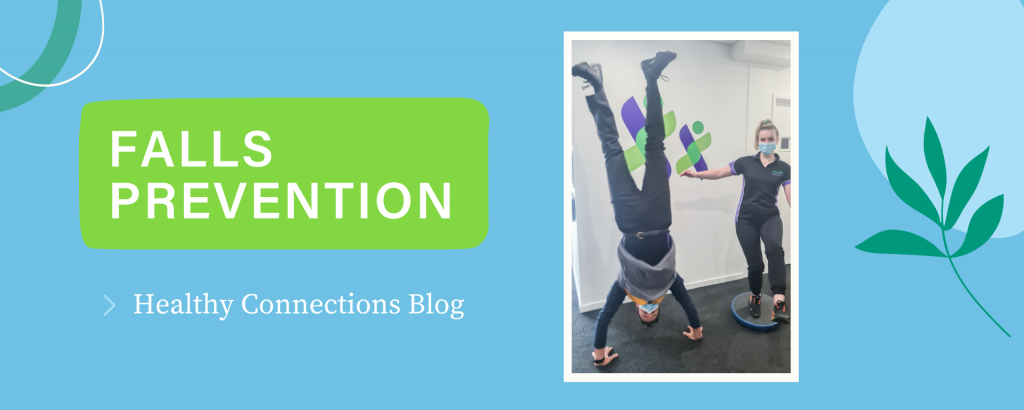
Nancy Jackson
Remedial Massage Therapist, Healthy Connections
One in three people over the age of 65 years will suffer from a fall at some stage.
Like many things in life, your body will naturally move towards the path of least resistance. It is constantly being pulled in certain directions because of tension in some muscles and less in others.
Your joints will naturally flex or extend according to this. It can change the way you stand, walk, sit and move. When your muscles are not in sync, you must use more effort and brain power to make precise movements. This increases the likelihood of a fall.
As you age it’s important to recognise that your balance will decrease. Take steps to prevent your risk of falls by getting your muscles back in sync.
How do we get our muscles in sync?
By maintaining your muscle strength and flexibility you can not only keep your muscles from pulling your joints in certain directions, but you can build bone mass and increase your circulation and sensitivity to the areas that may need it. Through exercise and recovery, you can keep your muscles in sync with each other.
Do you remember your clumsy teen years?
You may have been walking on even pavement, tripped over virtually nothing, then bounced straight back up into a stable standing position. You were more concerned with finding out who may have seen you.
Nowadays, this kind of clumsiness can cause all sorts of problems. Your bones may be more brittle. You may have decreased joint range and muscle mass, effecting your ability to get you upright again. You may also be more susceptible to bruising and soft tissue damage than you used to be.
One little fall can now be a life-changing event!
Falls can happen for several reasons. When it comes to falls there are two main factors to consider:
1. Your personal wellbeing
Vision, hearing and dizziness are big factors when it comes to balance and falls prevention. If you are suffering from these please don’t brush them off. When one of your senses is compromised, your risk of falling increases.
Balance exercises can stimulate your brain’s ability for body awareness and response times, decreasing those clumsy accidents. Healthy Connections is offering a Neurobalance program that aims to do exactly that! Challenge your brain and body, stimulating your nerves and muscles to work together, building better balance.
There is also a lot more we can do to help our future selves to prevent falls.
2. Your environment
Look at your home. Are there any uneven surfaces or narrow pathways? It may be unrealistic to get work done on these areas. If so, you could consider marking out the area using a coloured tape or signs.
If this is not possible, try to find an alternative way around. Even if it is longer, it may be better and you will be able to get your steps in for the day! If you know a surface is in a wet area such as the bathroom, use adhesive duct tape and wear nonslip shoes where possible. You may also need some assistance rails in these areas.
Knowing what help is out there for you is going to empower you. You might be surprised with what help you can get. If you are eligible, there are support services that can come out and assess your home requirements – they may be able to help you obtain and install these items.
All in all, managing your body, mind and environment can help you prevent or minimise the impact of a fall. Ensure you keep your independence for as long as possible by checking what you can improve on before you risk having a fall.




